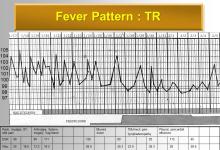Assessing and Treating CV Risk Increases in Systemic Lupus Save

We’ve recognized the increased risk of cardiovascular disease (CVD) in SLE for almost half a century since Urowitz et al. first described a bimodal pattern of mortality in lupus patients in 1976 (1). Numerous subsequent studies have confirmed the increased risk of CVD in lupus patients, with estimates of increased risk ranging from 2-10-fold compared to the general population (2). Most striking is the risk in young patients; in their landmark study, Manzi et al. found that women with SLE in the 35–44-year age group had an almost 50-fold increased risk of myocardial infarction compared to age-matched women without SLE (3).
There are numerous contributing factors to this increased risk seen in SLE patients. Traditional cardiac risk factors certainly contribute; in fact, lupus patients have higher rates of hypertension and dyslipidemia than the general population (2). Corticosteroids contribute to increases in diabetes and have also been directly associated with an increased risk of CVD, even at doses <5 mg a day (4). Even after accounting for traditional cardiac risk factors, however, there is still a 10-fold risk of myocardial infarction in SLE patients. This illustrates inflammation significantly contributes to increased CVD risk (5).
Without randomized controlled data to demonstrate efficacy of lupus-specific medications to CVD prevention, current guidelines still recommend minimizing traditional cardiovascular risk factors (6). Smoking cessation should be recommended for all, and some large observational studies suggest that hydroxychloroquine may have cardio-protective benefits (7). The target for blood pressure management should be <130/<80, which is associated with decreased cardiovascular event rate in SLE patients as well as non-autoimmune people. (8). Lifestyle modification can be beneficial; a recent systematic review found that a low-fat Mediterranean diet was associated with a lower risk of CVD and organ damage in lupus (9).
Lipid-lowering agents are another mainstay for primary prevention of CVD in SLE patients. Cardiovascular risk assessment tools can be used to help determine an individual patient’s 10-year risk, which can impact both timing and targets for the use of lipid-lowering agents. However, numerous studies have demonstrated that widely-used cardiovascular risk assessment tools developed for the general population may underestimate the true risk faced by SLE patients. For example, both the Atherosclerotic Cardiovascular Disease Risk Calculator (ASCVD) and the newer PREVENT algorithm (10) cannot be used in patients under 30 years of age. Urowitz et al. found that multiplying the Framingham risk score by a factor of 2 improved the predictive risk capacity for SLE patients (mFRS) (11). More recently, Zhu et al. found that the QRISK3 score, which incorporates SLE diagnosis and corticosteroid use as risk factors, had superior predictive capacity compared to other prediction models (12). The recently developed SLECRISK tool performed similarly to the mFRS and incorporates lupus disease activity into the risk score; this may be a particularly appropriate tool to capture risk in young active patients (13).
Despite an increased awareness in recent years among Rheumatologists about the increased risk of CVD in lupus patients, real-world optimization of primary cardiovascular prevention strategies often falls short. In a brief office visit, it is often difficult to address all questions related to lupus disease activity management, let alone discuss health prevention strategies. In addition, lupus patients are often already experiencing polypharmacy and may be reluctant to add yet another medication to their list. The development of joint Cardio-Rheum clinics may help to address some of these issues. Exciting newer agents such as sodium-glucose cotransporter 2 inhibitors (SGLT2) and GLP-1 inhibitors for cardiovascular risk reduction (14)(15) could also be beneficial to SLE patients, but future studies will be required to determine their benefits in autoimmune patients.
The significantly increased risk of CVD in lupus patients, especially those under 45 years old, calls for heightened vigilance and novel interventions. Framingham-type interventions such as smoking cessation, diet, and pharmacological lipid/blood pressure management are identical to CVD prevention in non-SLE patients. The increased risk caused by inflammation, glucocorticoids, and systemic autoimmunity in SLE, however, have led to new outlooks on specific lupus CVD risk panels and Cardiology-Rheumatology cooperation to prevent – not only treat – accelerated CVD in lupus.
1. Urowitz MB, Bookman AA, Koehler BE, Gordon DA, Smythe HA, Ogryzlo MA. The bimodal mortality pattern of systemic lupus erythematosus. Am J Med. 1976;60(2):221-5. PubMed PMID: 1251849.
2. Bello N, Meyers KJ, Workman J, Hartley L, McMahon M. Cardiovascular events and risk in patients with systemic lupus erythematosus: Systematic literature review and meta-analysis. Lupus. 2023;32(3):325-41. Epub 2022/12/23. doi: 10.1177/09612033221147471. PubMed PMID: 36547368; PMCID: PMC10012401.
3. Manzi S, Meilahn EN, Rairie JE, Conte CG, Medsger TA, Jr., Jansen-McWilliams L, D'Agostino RB, Kuller LH. Age-specific incidence rates of myocardial infarction and angina in women with systemic lupus erythematosus: comparison with the Framingham Study. Am J Epidemiol. 1997;145(5):408-15. PubMed PMID: 9048514.
4. Pujades-Rodriguez M, Morgan AW, Cubbon RM, Wu J. Dose-dependent oral glucocorticoid cardiovascular risks in people with immune-mediated inflammatory diseases: A population-based cohort study. PLoS Med. 2020;17(12):e1003432. Epub 2020/12/04. doi: 10.1371/journal.pmed.1003432. PubMed PMID: 33270649; PMCID: PMC7714202 following competing interests: Dr. AWM reports grants from Medical Research Council, grants from National Institute for Health Research, during the conduct of the study; grants and personal fees from Roche/ Chugai, personal fees from Sanofi, personal fees from GlaxoSmithKline, personal fees from Regeneron, outside the submitted work. Dr. MPR is currently employed by IQVIA (start of contract >1 year after completing and submitting this work). It is not possible to spell out IQVIA because there is no long form for it: https://www.quora.com/What-is-the-full-form-of-IQVIA.
5. Esdaile JM, Abrahamowicz M, Grodzicky T, Li Y, Panaritis C, du Berger R, Cote R, Grover SA, Fortin PR, Clarke AE, Senecal JL. Traditional Framingham risk factors fail to fully account for accelerated atherosclerosis in systemic lupus erythematosus. Arthritis Rheum. 2001;44(10):2331-7. PubMed PMID: 11665973.
6. Fanouriakis A, Kostopoulou M, Alunno A, Aringer M, Bajema I, Boletis JN, Cervera R, Doria A, Gordon C, Govoni M, Houssiau F, Jayne D, Kouloumas M, Kuhn A, Larsen JL, Lerstrom K, Moroni G, Mosca M, Schneider M, Smolen JS, Svenungsson E, Tesar V, Tincani A, Troldborg A, van Vollenhoven R, Wenzel J, Bertsias G, Boumpas DT. 2019 update of the EULAR recommendations for the management of systemic lupus erythematosus. Ann Rheum Dis. 2019;78(6):736-45. doi: 10.1136/annrheumdis-2019-215089. PubMed PMID: 30926722.
7. Yang DH, Leong PY, Sia SK, Wang YH, Wei JC. Long-Term Hydroxychloroquine Therapy and Risk of Coronary Artery Disease in Patients with Systemic Lupus Erythematosus. J Clin Med. 2019;8(6). doi: 10.3390/jcm8060796. PubMed PMID: 31195632; PMCID: PMC6616930.
8. Tselios K, Gladman DD, Su J, Urowitz M. Impact of the new American College of Cardiology/American Heart Association definition of hypertension on atherosclerotic vascular events in systemic lupus erythematosus. Ann Rheum Dis. 2020;79(5):612-7. Epub 2020/03/12. doi: 10.1136/annrheumdis-2019-216764. PubMed PMID: 32156706.
9. Tsoi A, Gomez A, Bostrom C, Pezzella D, Chow JW, Girard-Guyonvarc'h C, Stamm T, Arnaud L, Parodis I. Efficacy of lifestyle interventions in the management of systemic lupus erythematosus: a systematic review of the literature. Rheumatol Int. 2024;44(5):765-78. Epub 2024/03/07. doi: 10.1007/s00296-024-05548-x. PubMed PMID: 38451302; PMCID: PMC10980639.
10. Khan SS, Matsushita K, Sang Y, Ballew SH, Grams ME, Surapaneni A, Blaha MJ, Carson AP, Chang AR, Ciemins E, Go AS, Gutierrez OM, Hwang SJ, Jassal SK, Kovesdy CP, Lloyd-Jones DM, Shlipak MG, Palaniappan LP, Sperling L, Virani SS, Tuttle K, Neeland IJ, Chow SL, Rangaswami J, Pencina MJ, Ndumele CE, Coresh J, Chronic Kidney Disease Prognosis C, the American Heart Association Cardiovascular-Kidney-Metabolic Science Advisory G. Development and Validation of the American Heart Association's PREVENT Equations. Circulation. 2024;149(6):430-49. Epub 2023/11/10. doi: 10.1161/CIRCULATIONAHA.123.067626. PubMed PMID: 37947085; PMCID: PMC10910659.
11. Urowitz MB, Ibanez D, Su J, Gladman DD. Modified Framingham Risk Factor Score for Systemic Lupus Erythematosus. J Rheumatol. 2016;43(5):875-9. doi: 10.3899/jrheum.150983. PubMed PMID: 26879352.
12. Zhu L, Singh M, Lele S, Sahakian L, Grossman J, Hahn B, McMahon M. Assessing the validity of QRISK3 in predicting cardiovascular events in systemic lupus erythematosus. Lupus Sci Med. 2022;9(1). Epub 2022/02/24. doi: 10.1136/lupus-2021-000564. PubMed PMID: 35193947; PMCID: PMC8867320.
13. Choi MY, Guan H, Yoshida K, Paudel M, Kargere BA, Li D, Ellrodt J, Stevens E, Cai T, Weber BN, Everett BM, Costenbader KH. Personalizing cardiovascular risk prediction for patients with systemic lupus erythematosus. Semin Arthritis Rheum. 2024;67:152468. Epub 2024/05/25. doi: 10.1016/j.semarthrit.2024.152468. PubMed PMID: 38788567; PMCID: PMC11214838.
14. Ma KS, Lo JE, Kyttaris VC, Tsokos GC, Costenbader KH. Efficacy and Safety of Sodium-Glucose Cotransporter 2 Inhibitors for the Primary Prevention of Cardiovascular, Renal Events, and Safety Outcomes in Patients With Systemic Lupus Erythematosus and Comorbid Type 2 Diabetes: A Population-Based Target Trial Emulation. Arthritis Rheumatol. 2025;77(4):414-22. Epub 2024/10/21. doi: 10.1002/art.43037. PubMed PMID: 39431397.
15. Turkistani Y. Glucagon-like peptide-1 receptor agonists: a review from a cardiovascular perspective. Front Cardiovasc Med. 2025;12:1535134. Epub 2025/05/09. doi: 10.3389/fcvm.2025.1535134. PubMed PMID: 40342976; PMCID: PMC12060260.










If you are a health practitioner, you may Login/Register to comment.
Due to the nature of these comment forums, only health practitioners are allowed to comment at this time.